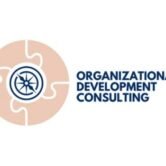How to Create a Successful Leadership Development Program

Leadership is the backbone of every successful organization. Strong leaders inspire, guide, and shape the culture of a company. However, effective leaders are rarely “born”—they are developed through intentional effort, structured learning, and practice. This is where leadership development programs come into play.
Whether you are a small business or a large corporation, building a successful leadership development initiative ensures that your team is equipped with the skills needed to handle challenges, foster innovation, and drive long-term success. In this article, we’ll explore how to create a successful program and why it’s essential for your business in 2025 and beyond.
Why Leadership Development Matters
Organizations thrive when they invest in leadership. Without effective leaders, teams lack direction, productivity suffers, and employee turnover often increases. Leadership development training gives individuals the skills to communicate effectively, resolve conflicts, make strategic decisions, and motivate others.
Companies that adopt structured leadership training programs not only prepare for future leadership needs but also build a culture of growth and accountability. When employees see opportunities to advance, engagement and retention improve significantly.
Key Elements of a Successful Leadership Development Program
1. Define Clear Objectives
The first step is to clarify what your program aims to achieve. Are you focusing on grooming future executives, improving team management, or preparing employees for cross-functional leadership? Defining goals ensures your leadership development programs align with organizational strategy.
2. Identify Potential Leaders
Not every high-performing employee is a natural leader. Use assessments, feedback, and performance reviews to identify individuals who demonstrate strong communication, problem-solving, and decision-making skills.
3. Design Tailored Leadership Training Programs
Every organization has unique needs. Instead of using a one-size-fits-all model, create leadership training programs that reflect your company’s culture, values, and future vision. This could include workshops, online courses, mentorship, or on-the-job projects.
4. Incorporate Coaching and Mentoring
Mentorship is one of the most effective ways to develop leadership talent. Pairing emerging leaders with experienced mentors provides real-world guidance, feedback, and opportunities to learn from mistakes.
5. Focus on Soft Skills
Technical expertise matters, but emotional intelligence, communication, and adaptability are what set leaders apart. Effective leadership development training should emphasize empathy, listening, and team collaboration.
6. Use Experiential Learning
Leaders learn best by doing. Incorporate simulations, role-playing, and real-world projects to help participants practice their skills in a safe environment.
7. Leverage Technology
In 2025, technology plays a crucial role in learning. Virtual reality, AI-driven coaching, and online collaboration platforms can enhance the reach and impact of leadership development programs.
8. Measure Success
Finally, track the outcomes of your program. Metrics such as employee retention, team performance, and engagement scores can help you determine whether your efforts are making an impact.
Benefits of Strong Leadership Development Programs
- Improved Employee Retention – Employees are more likely to stay in organizations that invest in their growth.
- Increased Productivity – Skilled leaders create motivated teams that consistently perform at higher levels.
- Stronger Company Culture – Leadership training fosters trust, transparency, and shared values across teams.
- Future-Ready Workforce – With well-prepared leaders, your organization is better equipped to navigate market shifts.
Final Thoughts
Creating a successful leadership development program requires strategy, investment, and commitment. By combining structured leadership training programs, personalized coaching, and ongoing feedback, organizations can build leaders who drive innovation, inspire their teams, and ensure long-term success.
In 2025 and beyond, companies that prioritize leadership development training will gain a competitive edge, not just by filling leadership positions, but by creating visionary leaders who shape the future of work.










